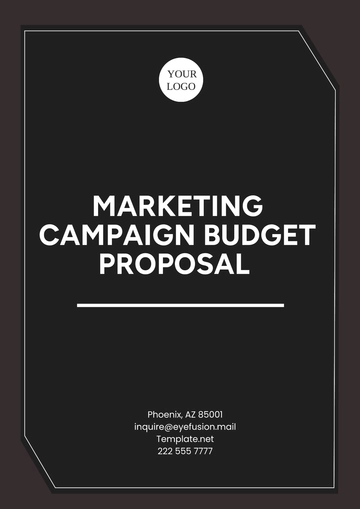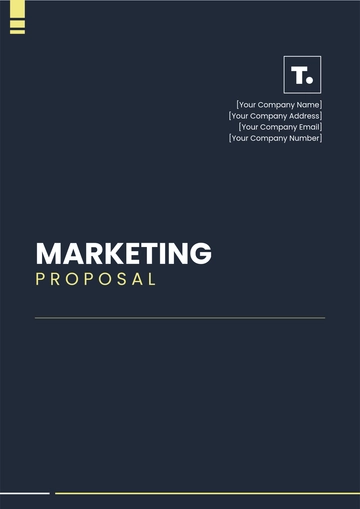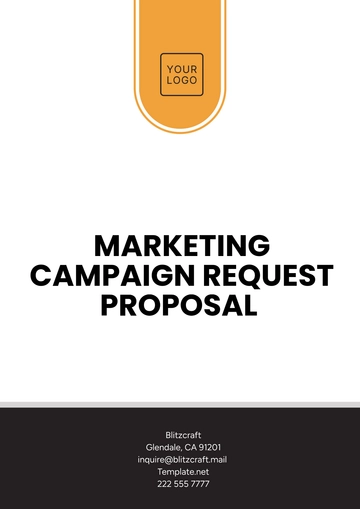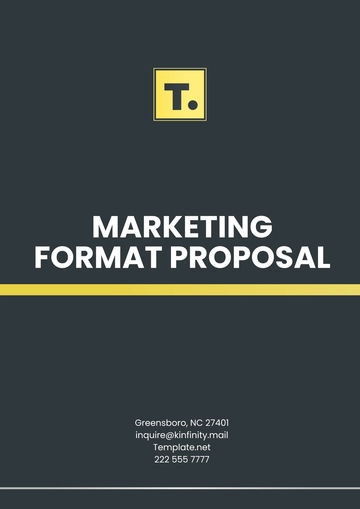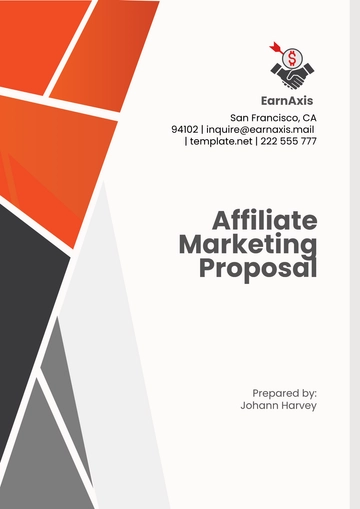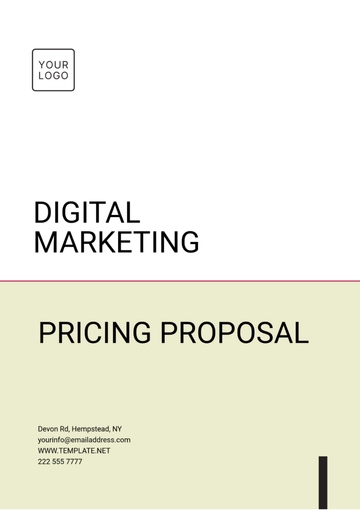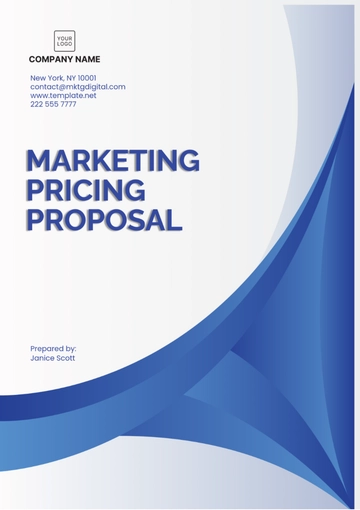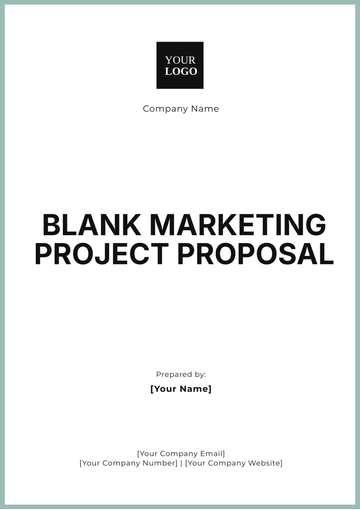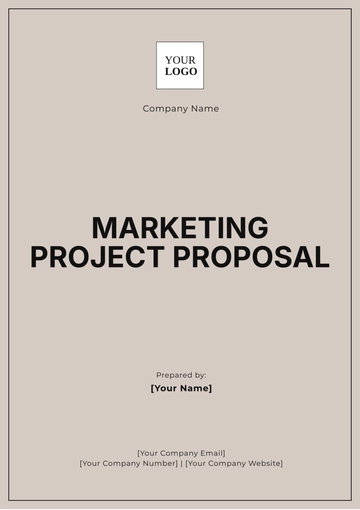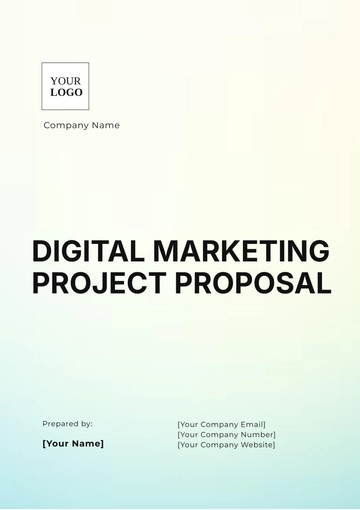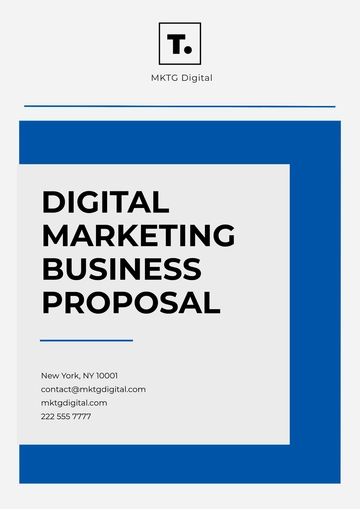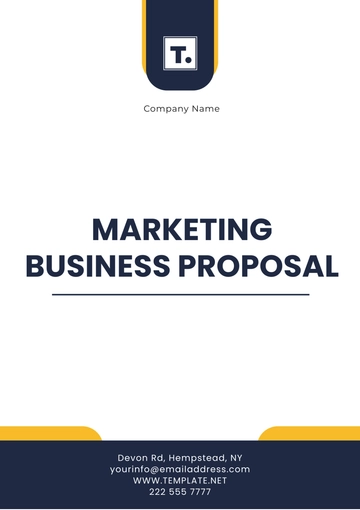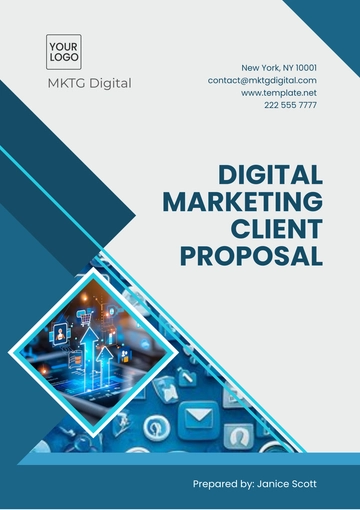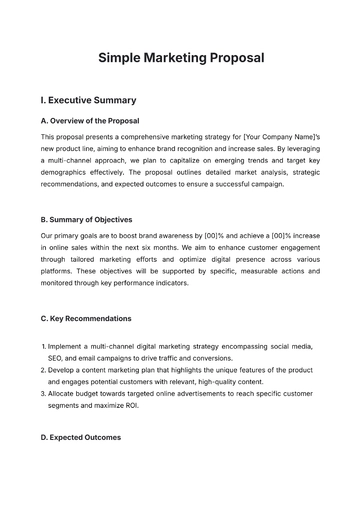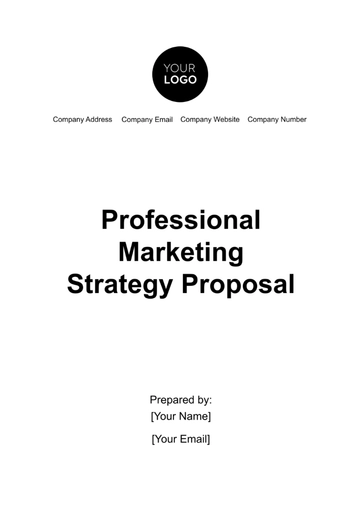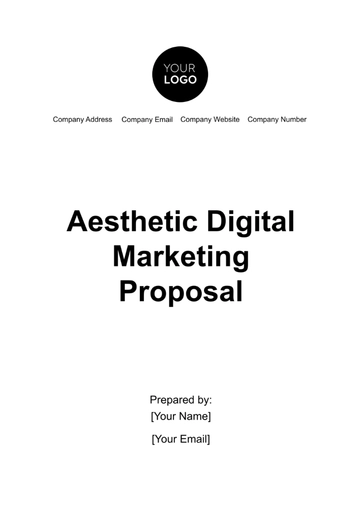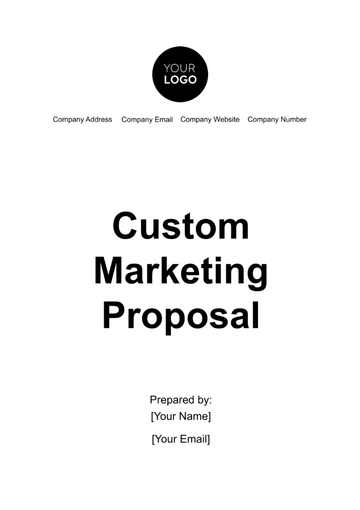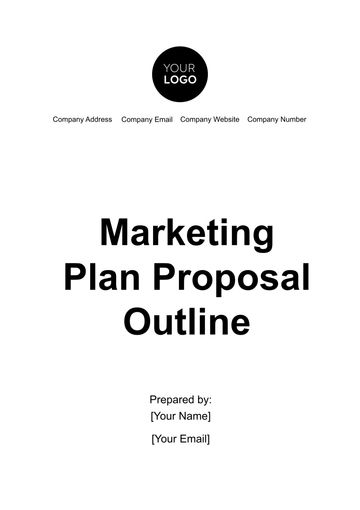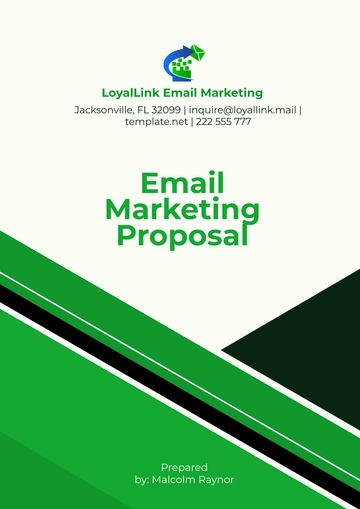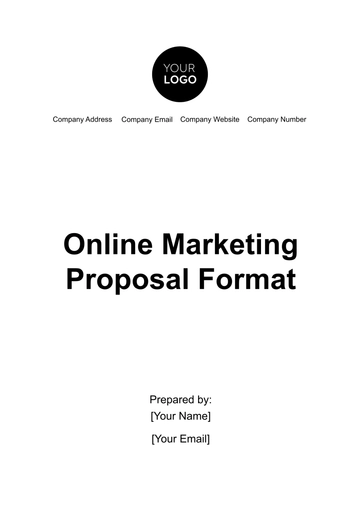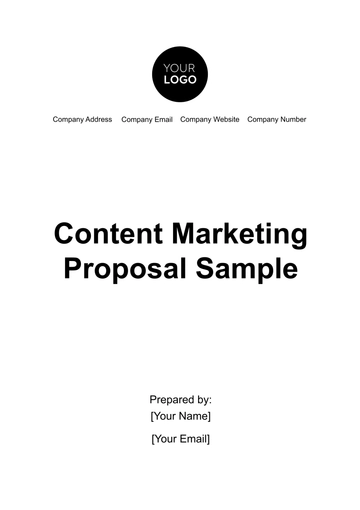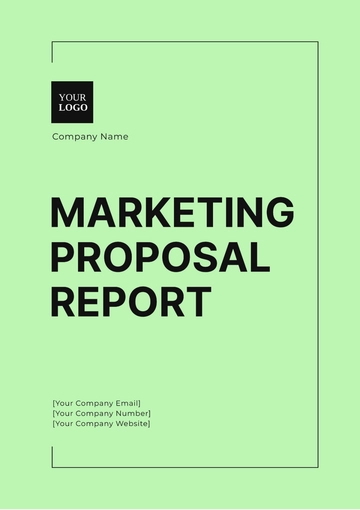Free Comprehensive Marketing Advertising Proposal
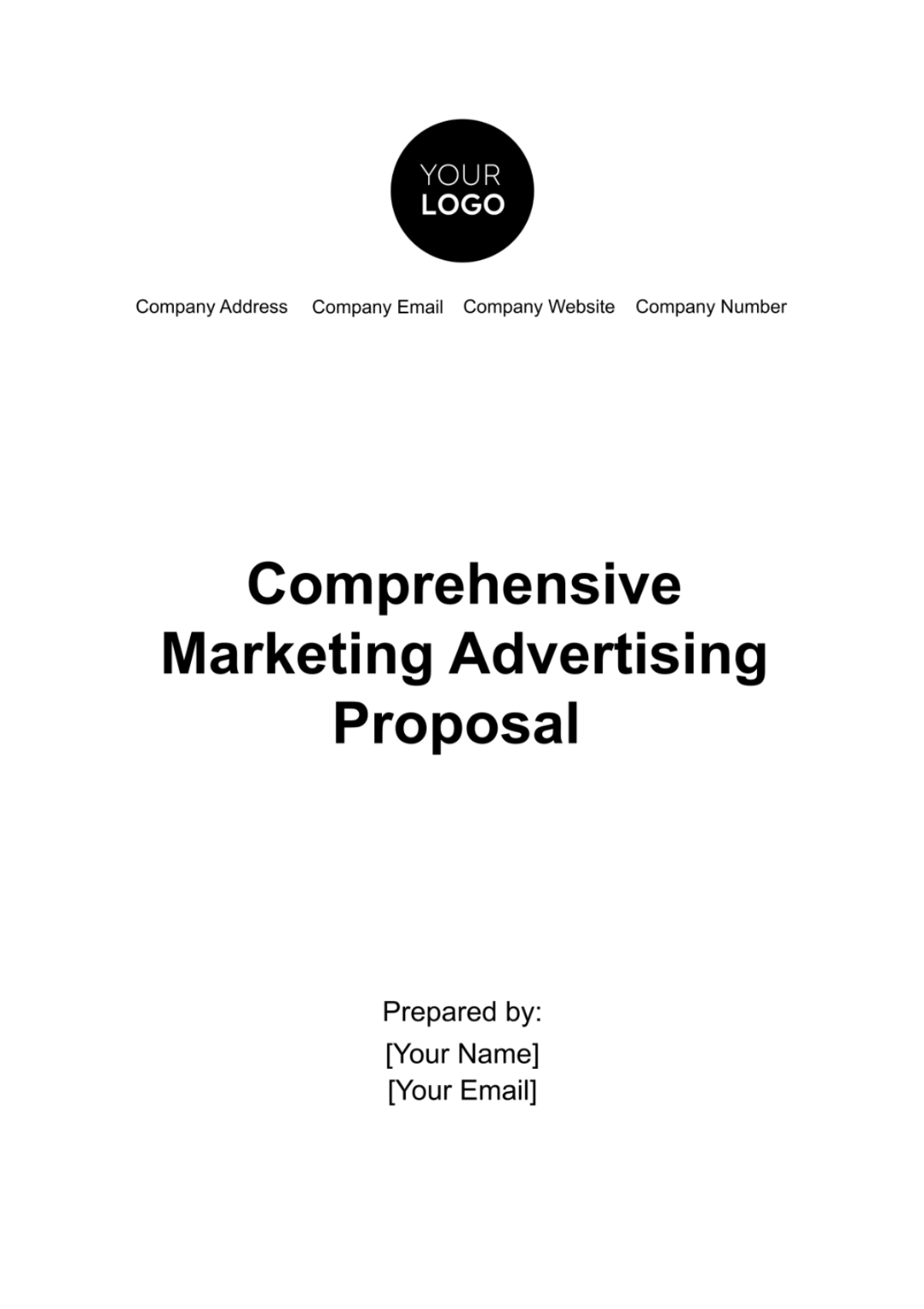
Executive Summary
This proposal outlines the marketing strategy for the launch of our latest product, the [Product Name], which promises to provide clean drinking water with an innovative filtration system that is both eco-friendly and cost-effective. Our goal is to achieve a [25%] market share within the first year post-launch.
Key Strategies
We will deploy an integrated marketing approach combining digital presence, community engagement, and innovative advertising to build brand awareness and drive sales. Anticipated outcomes include increased brand recognition, a [35%] increase in website traffic, and a 15% conversion rate from leads to sales.
Market Analysis
The market analysis is crucial for understanding the environment in which the [Product Name] water filter will operate. The global water filtration industry is growing rapidly, driven by increasing health awareness and environmental concerns. The industry's value is estimated at [$18 billion], with a projected growth rate of [8.6%] over the next [five years].
Target Market
Our primary target market consists of environmentally conscious families in urban areas. We have identified two key segments within this market:
Health-Conscious Families: Parents aged [30-45], focused on providing a healthy lifestyle for their children.
Eco-Friendly Consumers: Individuals who prioritize sustainable living and eco-friendly products.
A detailed demographic breakdown is as follows:
Demographic | Percentage |
Age 30-45 | 60% |
Median Household Income $75,000+ | |
Located in Urban Areas |
Competitor Analysis
Our main competitors offer insights into the market's dynamics. [PureWater]'s extensive product range and market presence make it a formidable competitor. In contrast, [AquaSafe]'s focus on premium products attracts a niche but loyal customer base.
SWOT Analysis
Strengths | Weaknesses |
Eco-friendly product | New market entrant |
Advanced filtration technology | Limited brand recognition |
Opportunities | Threats |
Growing eco-consciousness | Regulatory changes |
Technological advancements | Established competitors |
Marketing Objectives
Primary Objectives
Cultivate a robust and recognizable brand identity within the first six months, leveraging multi-channel marketing strategies.
Aim to sell [50,000] units of [Product Name] within the [first year], focusing on targeted sales campaigns and strategic promotions.
Foster a dedicated customer base and encourage repeat purchases through customer loyalty programs, exceptional service, and consistent quality.
Secondary Objectives
Actively engage with local communities to promote the brand and create a positive brand image. This includes participation in community events, local sponsorships, and collaborative projects.
Form strategic alliances with eco-friendly initiatives and organizations, emphasizing the brand's commitment to sustainability and corporate social responsibility. This approach not only aligns with the brand's values but also appeals to environmentally conscious consumers.
Marketing Strategies
Product Strategy
[Product Name] is positioned as an innovative, sustainable solution to water filtration. We emphasize its unique filtration technology and the use of environmentally friendly materials. The product will be available in multiple sizes to cater to different family needs.
Pricing Strategy
[Product Name] will adopt a competitive pricing strategy, positioned as a mid-market product. This will make it accessible to a broad audience while highlighting its long-term cost-effectiveness and environmental benefits.
Place (Distribution) Strategy
Our distribution channels will be a mix of online and physical retail. We will partner with major e-commerce platforms, as well as retail chains that align with our eco-friendly ethos. Additionally, we will explore a direct-to-consumer model through our website.
Promotion Strategy
The promotion strategy will focus on highlighting the product's benefits and the brand's commitment to sustainability. We will use storytelling in our marketing to connect with our target audience's values.
Advertising Plan
Media Mix
Our advertising will be spread across various channels, with a significant focus on digital media due to its high penetration in our target market.
Channel | Allocation |
Digital | 60% |
Television | |
Creative Direction
The advertising will center around the theme "Purity in Every Drop," using imagery of nature and families. The message will convey both the health benefits of clean water and the environmental impact of choosing [Product Name].
Media Schedule
The initial intensive campaign will last three months, followed by ongoing, less frequent advertising to maintain brand presence.
Digital Marketing
SEO & Content Marketing
Targeted Keyword Optimization: Focus on carefully selected keywords associated with water purity, eco-conscious living, and sustainable practices. This approach aims to improve search engine rankings and visibility.
Content Strategy Enhancement: Increase the frequency and diversity of content with weekly blog posts, how-to guides on water conservation, and feature articles. Incorporate multimedia elements like infographics and videos to enrich user engagement and information retention.
Social Media Marketing
Facebook: Emphasize community building and customer interaction through engaging content and prompt responses to comments and messages.
Instagram: Utilize visually appealing posts, stories, and reels to showcase the practical applications and benefits of [Product Name], including user-generated content.
Twitter: Focus on real-time updates, quick tips, and industry news to keep the audience informed and engaged.
Email Marketing
Engaging Newsletters: Develop monthly newsletters that not only update subscribers on the latest in water quality research but also include interactive elements such as quizzes, polls, and exclusive offers.
Personalization and Segmentation: Implement email segmentation and personalization techniques to cater to different subscriber interests, enhancing relevance and engagement.
This digital marketing approach is designed to build a strong online presence for [Product Name], foster a connected community, and provide valuable, engaging content to the audience.
Sales Promotion and Public Relations
Sales Promotions
Implement a [20%] discount for first-time buyers to attract new customers and stimulate initial sales. This promotion will be strategically advertised across digital platforms to maximize reach.
Referral Incentives
Introduce a comprehensive referral program, where existing customers can earn rewards or discounts for referring new customers. This approach not only drives sales but also leverages word-of-mouth marketing.
Event Marketing
Actively sponsor local environmental events, aligning [Product Name] with eco-conscious initiatives. This will not only boost brand visibility but also demonstrate the brand's commitment to environmental sustainability.
Educational Webinars
Host a series of informative webinars focusing on water sustainability, positioning [Product Name] as a thought leader in the industry. These webinars will also serve as a platform to showcase the product's unique features and benefits.
Public Relations
Collaborate with prominent eco-lifestyle influencers to create authentic and impactful content that resonates with environmentally conscious consumers. These partnerships will enhance the brand's credibility and reach.
Media Outreach
Proactively engage with news outlets and lifestyle publications to feature [Product Name] and its mission. Tailored press releases and media kits will be distributed to highlight the product's unique selling points and its alignment with sustainability goals.
Budget and Resource Allocation
Overall Budget
Set at [$500,000], this budget is allocated across various marketing channels and activities to ensure optimal utilization of resources and maximum return on investment.
Cost per Strategy
Strategy | Budget Allocation |
Digital Marketing | $200,000 |
Advertising | |
Public Relations | |
Sales Promotions |
This strategic allocation of the marketing budget is designed to maximize the impact of each dollar spent, ensuring that [Product Name] achieves its marketing objectives and establishes a strong market presence within its first year.
ROI Projections
We project a robust [50%] Return on Investment (ROI) in the first year. This projection is grounded in the comprehensive and strategic allocation of our marketing budget, combined with the anticipated market response to our sales and promotional efforts.
Long-Term Profitability
Scaling ROI with Brand Growth: As brand recognition and market penetration intensify, we anticipate an upward trajectory in profitability. The compounding effect of brand loyalty, expanded market reach, and optimized marketing strategies are expected to significantly enhance ROI beyond the first year.
Continuous ROI Optimization: Regular reviews and adjustments of our marketing tactics, informed by data analytics and market feedback, will be implemented to continually improve ROI. We aim to not only meet but exceed our initial projections through meticulous monitoring and agile response to market dynamics.
This ROI projection underscores our confidence in the marketing strategy for [Product Name] and its potential for sustained growth and profitability.
Implementation Timeline
Gantt Chart
Task Scheduling and Management: A detailed Gantt chart will be crafted to map out all the specific tasks associated with the marketing plan for [Product Name]. This chart will include timelines, responsible parties, and interdependencies between various activities.
Dynamic Tracking: The Gantt chart will serve as a dynamic tool for tracking progress, allowing for real-time updates and adjustments to keep the marketing campaign on schedule and responsive to any unforeseen changes.
Milestones
Milestone | Due Date |
Product Launch | [June 1, 2050] |
25,000 Units Sold | |
Mid-Year Review | |
End-of-Year Analysis |
Evaluation and Measurement
KPIs (Key Performance Indicators)
Sales Performance: Monthly units sold. Track sales trends to gauge market demand and campaign effectiveness.
Digital Engagement: Website traffic, unique visitors, and conversion rates. Assess the efficacy of digital marketing efforts in attracting and converting leads.
Brand Awareness and Reach: Social media engagement rates and survey data on brand recognition. Evaluate the impact of marketing strategies on increasing brand visibility.
Feedback Mechanisms
Regular Customer Surveys: Conduct surveys at strategic intervals to gather comprehensive customer feedback on product quality, marketing communication, and overall satisfaction.
Social Media Analytics: Monitor and analyze social media interactions to understand customer perceptions and engagement levels with the brand.
Reporting Schedule
Generate detailed reports monthly, providing insights into the performance against each KPI. These reports will serve as the basis for reviewing strategies and making data-driven adjustments.
Conclusion
This marketing proposal for [Product Name] represents a strategic and data-driven approach to capturing key market segments and boosting overall sales. [Your Company Name] is committed to delivering exceptional results through innovative marketing techniques and a deep understanding of consumer behavior.
- 100% Customizable, free editor
- Access 1 Million+ Templates, photo’s & graphics
- Download or share as a template
- Click and replace photos, graphics, text, backgrounds
- Resize, crop, AI write & more
- Access advanced editor
Introducing Template.net's Comprehensive Marketing Advertising Proposal Template. This editable and customizable solution, powered by our Ai Editor Tool, streamlines proposal creation. Craft tailored marketing strategies, outline budgets, and showcase your brand's potential with ease. Elevate your proposals with Template.net's innovative solutions for impactful marketing campaigns.
You may also like
- Business Proposal
- Research Proposal
- Proposal Request
- Project Proposal
- Grant Proposal
- Photography Proposal
- Job Proposal
- Budget Proposal
- Marketing Proposal
- Branding Proposal
- Advertising Proposal
- Sales Proposal
- Startup Proposal
- Event Proposal
- Creative Proposal
- Restaurant Proposal
- Blank Proposal
- One Page Proposal
- Proposal Report
- IT Proposal
- Non Profit Proposal
- Training Proposal
- Construction Proposal
- School Proposal
- Cleaning Proposal
- Contract Proposal
- HR Proposal
- Travel Agency Proposal
- Small Business Proposal
- Investment Proposal
- Bid Proposal
- Retail Business Proposal
- Sponsorship Proposal
- Academic Proposal
- Partnership Proposal
- Work Proposal
- Agency Proposal
- University Proposal
- Accounting Proposal
- Real Estate Proposal
- Hotel Proposal
- Product Proposal
- Advertising Agency Proposal
- Development Proposal
- Loan Proposal
- Website Proposal
- Nursing Home Proposal
- Financial Proposal
- Salon Proposal
- Freelancer Proposal
- Funding Proposal
- Work from Home Proposal
- Company Proposal
- Consulting Proposal
- Educational Proposal
- Construction Bid Proposal
- Interior Design Proposal
- New Product Proposal
- Sports Proposal
- Corporate Proposal
- Food Proposal
- Property Proposal
- Maintenance Proposal
- Purchase Proposal
- Rental Proposal
- Recruitment Proposal
- Social Media Proposal
- Travel Proposal
- Trip Proposal
- Software Proposal
- Conference Proposal
- Graphic Design Proposal
- Law Firm Proposal
- Medical Proposal
- Music Proposal
- Pricing Proposal
- SEO Proposal
- Strategy Proposal
- Technical Proposal
- Coaching Proposal
- Ecommerce Proposal
- Fundraising Proposal
- Landscaping Proposal
- Charity Proposal
- Contractor Proposal
- Exhibition Proposal
- Art Proposal
- Mobile Proposal
- Equipment Proposal
- Student Proposal
- Engineering Proposal
- Business Proposal

